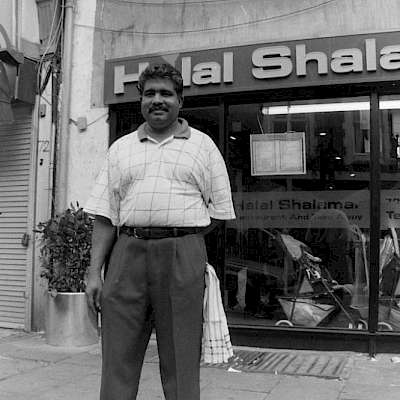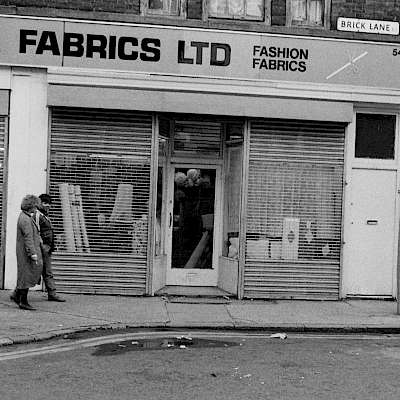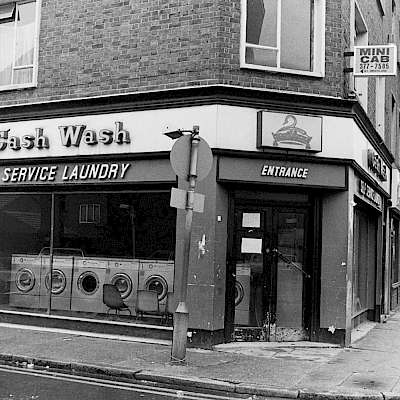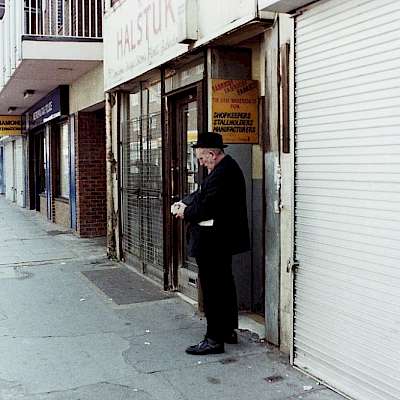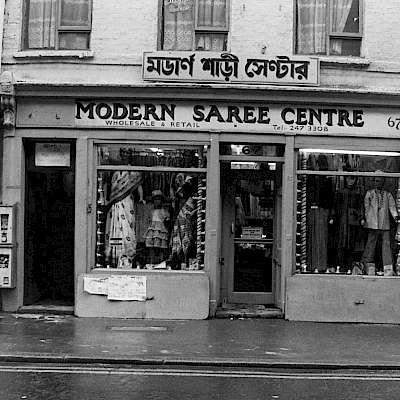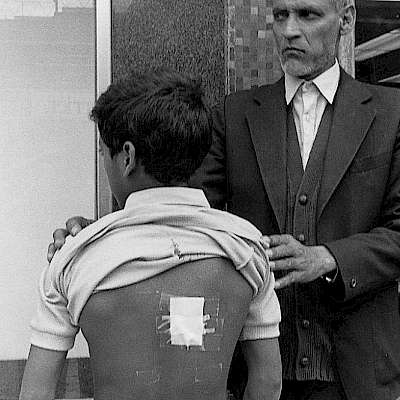BEYOND BANGLATOWN
PHOTO EXHIBITION
VAIDYANATHAN
Raju Vaidyanathan’s Brick Lane: 40 years of change
Brick Lane has always been a place of change, located at the heart of the global city of London. It is a place of arrival, of settlement, of departure, for waves of refugees and migrants from across the world. From the Hugenots to the Irish and Jewish communities who followed, Brick Lane has been home, where they have left their mark on the street – its houses, its businesses, its places of worship - and moved on.
The Bangladeshi community follow in this tradition: from the lascars who disembarked at the nearby docks in the 19th Century to the arrival of families following Bangladeshi independence in 1971, Bengalis have made Tower Hamlets, and Brick Lane, their home. About 1/3 of the Borough’s residents are of Bangladeshi heritage, and Brick Lane/Banglatown, with its curry restaurants and cafes, grocery stores and sweet shops, remain important to British Bangladeshi identity, particularly for the first and second generations.
Brick Lane is both a place of safety, and a space that captures the landscape of a fast changing city. From the small industrial leather and textile working factories of the 1970s, to the neon signs of the curry houses and cafes that mark the arrival of ‘Banglatown’, the street reflects the changing lives of British Bangladeshis in East London. By the mid-2000s, Banglatown was home to over 60 ‘Indian’ restaurants and cafes, and was the indisputable ‘curry capital’ of the UK. However, by 2020, only 23 curry cafés and restaurants remained, and were under threat from both the expansion of the newly gentrified northern part of the street, and the Covid19 pandemic.
During our research, we encountered Raju Vaidyanathan, a former youth worker. Born and raised in Brick Lane, and with a passion for local history and the people who make and shape it, Raju has been taking photographs of the Lane and the surrounding area since 1983, after a friend gave him a small, second-hand camera. Because he did not have much money when he started, his early photographs are black-and-white. Only later, when Raju was earning more, and purchased a more expensive camera, was shooting in colour possible. Still living and working in the area, he always keeps a camera with him and takes pictures of anything that catches his eye - people strolling down the Lane or attending the Boishakhi Mela, a curry house undergoing conversion into a sushi restaurant, or Deliveroo personnel delivering meals to someone’s home or office. Raju estimates that he has taken over 40,000 pictures in nearly 40 years. Without a doubt, he is the quintessential chronicler of changes in Brick Lane-Banglatown.
In this exhibition, we have worked with Raju to select 58 of his photographs to chronicle the life of Bengali Brick Lane, and its changes over the past 40 years. As this iconic street emerges from the pandemic and faces a new period of change, these wonderful images capture and celebrate Brick Lane and its people.
On September 23rd, 2021, as part of the launch of the online exhibition of his work, Raju Vaidyanathan spoke with Sundeep Lidher about his life and photography.











